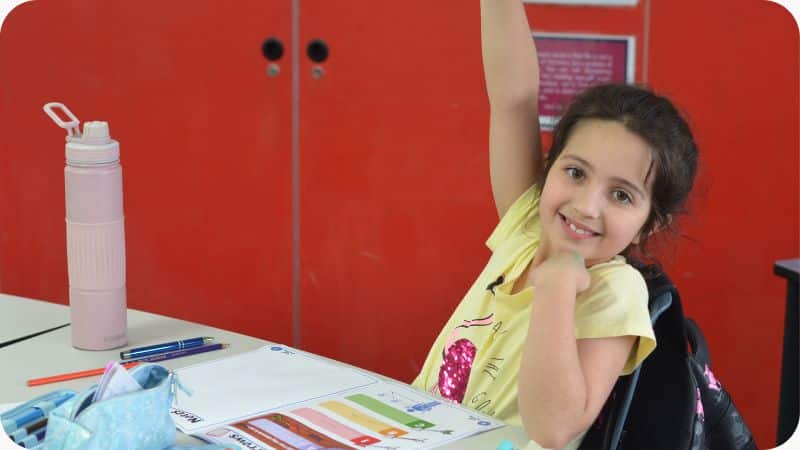How to Help Kids Overcome Stage Fright While Public Speaking
11 August 2022
Giving speeches can be nerve-wracking for kids, especially if they are not used to speaking in public. However, with a bit of confidence and some helpful tips, your child can overcome their stage fright and deliver a great speech! In this blog post, we will discuss some tips that will help your child feel more confident when giving speeches. We will also provide a few strategies that they can use to calm their nerves before going on stage.

Practise your speech as often as possible
One of the best ways to gain confidence is to practice, practice, practice! If your child can memorise their speech and then practice delivering it in front of you or another family member, they will be more comfortable with the material and less likely to freeze up when they are on stage. You can also help them by providing positive feedback and constructive criticism after each practice session.
You can learn more about the benefits of practising properly in some of our other blogs!
Practise breathing exercises with each run-through
Another way to help your child build confidence with each practice session is to teach them some deep breathing exercises. When we are nervous, our heart rate speeds up and we start to take shallow breaths. This can make us feel even more anxious and contribute to the feeling of stage fright.
By teaching your child some deep breathing exercises, they will be able to slow down their heart rate and take some deep breaths to calm themselves before they start their speech. You can find some examples of different breathing techniques on our YouTube channel!
Nervousness is normal while public speaking
It is important to remind your child that it’s normal to feel anxious when public speaking. Even the most experienced speakers still get butterflies before they give a speech. Remind them that it is normal to feel nervous and that the key is to focus on the material and deliver the speech to the best of their ability.
If you follow these tips, your child will be well on their way to giving a great speech without any stage fright!

Practising alone can be a great starting point
Too shy to practice in front of the family? Why not encourage kids to start by practising in front of the mirror? This way, they can get used to hearing their own voice and seeing themselves speak. Learning the speech and overcoming the fear of public speaking are two separate tasks, and as with all things in life, most people build self-confidence if they have already ticked one thing off the list!
One step better than this might even be speaking to a camera, and watching their speech back. This is a great opportunity for them to catch any mistakes in their speech so that they can fix them before the big day, and to learn how to focus on eye contact without the need to feel embarrassed or the social phobia of looking into an audience member’s eyes while talking.
Now you’re prepared to have people listening
Once your child feels more confident practising their speech in front of the mirror or camera, they’ll be ready to take it up a notch by asking family and friends for feedback. This can be done in person or even over a video call if you have relatives who live far away. Just make sure that the feedback is constructive and positive so that your child feels encouraged.
Choose the right topic
Another great way to help your child beat stage fright is to encourage them to write a speech they are genuinely passionate about. Often they can focus on any topic they are interested in, from their favourite animal to their favourite hobby. If kids are passionate about what they are saying, it will show in their confidence level and delivery. This will also help them to connect with their audience, which is an important part of giving a great speech. You can also learn more about interpreting and selecting topics here.
The purpose of the speech
Speeches can serve a variety of different purposes. It’s important to teach children that their speeches can be written to entertain, persuade, or inform (and many will do a combination of two or even all three!
An entertaining speech is meant to make the audience laugh or smile.
A persuasive speech is one in which the speaker tries to convince the audience to believe or do something.
An informative speech is meant to educate the audience about a certain topic.
You’re not limited to just one of these purposes – often you’ll hear great speeches with all three! Just make sure you are clear about which purposes you intend on taking on, as this will form the basis of your presentation.

Presentations with purpose produce less performance anxiety
Knowing the purpose of the speech is a solid building block for developing the communication skills of adjusting our speaking style to suit what we are talking about.
When we know whether our task is to entertain, persuade, or inform, we often experience a decline in performance anxiety because we know how to approach the task at hand. We don’t need to be funny, persuasive, and informative. We can be whichever of these suits us best and makes us feel the most relaxed – it’s up to the speaker to choose!
Finding the one that best suits your child
Some kids can benefit a lot by changing the purpose of their speech. While some kids love to be informative speakers, others may feel much more confident by presenting a funny speech! Offering them a choice in the matter can also help them to relax and reduce stage fright by allowing them to control the direction of their presentation. This is similar to creative writing, in which children often develop a personal storytelling style that is fun for them and makes them feel inspired.
Selecting the right topic
When deciding on a topic, be sure to choose one that matches the purpose of the speech. For example, if the speech is meant to be entertaining, choose a topic that is light-hearted and funny. If the speech is meant to be persuasive, choose a topic that you are passionate about and that you know will resonate with the audience.
It can be important to consider whether the audience will be of a young age, a broad range of ages, or attending for a specific occasion. Selecting a topic you are confident the crowd will find interesting can boost self-esteem while presenting at school or in class.
What are some speech topic ideas for kids?
- A review of their favourite book
- Why they should get a pet
- How to make their favourite recipe
- The history of their favourite sport
- Their opinion on current events
The sky is the limit when it comes to choosing a topic for kids to write about. Just make sure it is something they are passionate about so that they can deliver a great speech and also have fun whilst public speaking!
Talking about nerves can make all the difference
Another way to help your child overcome their stage fright is to talk to them about what they are feeling. Help them to understand that it is normal to feel some nerves before a big performance, but that there are ways to manage those nerves so they don’t get in the way of a great speech. Encourage them to take some deep breaths and focus on their positive qualities. Remind them that they have worked hard and that you know they can do it!

Name and acknowledge feelings to reduce stress and anxiety
It is helpful to give a name to the uneasy feeling or nervous energy you are experiencing. The body naturally goes into a fight or flight response when we feel unsafe or perceive that we are facing a dangerous situation. Breaking down this physiological reaction and understanding that each symptom will pass can be very beneficial.
Visualise with a body scan
Try to visualise the performance anxiety symptoms you are experiencing: tight throat, trembling hands, changes in heart rate, rapid breathing, racing pulse, strained voice, sweaty palms. Rather than trying to control these experiences, just acknowledge them and move on to focusing on other areas of the body. This relaxation technique can reduce public speaking anxiety and help with anxiety in general.
Presentation success can prove our fear was based on a myth all along
There’s nothing wrong with feeling the symptoms of social anxiety or anxiety in general. They are simply feelings that come from our public speaking fears, and will often pass when we discover that the experience didn’t happen the way we expected it to at all.
A lot of the time, the presentation was way more fun and much more of a success than we anticipated, as we tend to engage with overly negative talk to ourselves when facing a scary obstacle.

Overcome the fear of public speaking with calming techniques
If your child is still feeling nervous before their big speech, there are a few calming techniques that they can try. One is to take slow, deep breaths through the nose and out through the mouth, like those discussed above. This will help to slow down their heart rate and calm their nerves. Another helpful technique is to visualise themselves giving a great speech. They should picture themselves feeling confident and relaxed on stage, and imagine the audience applauding after they finish speaking. This will help to boost their confidence levels.
Give words of encouragement
Finally, be sure to give your child plenty of support on the day of the big event. Arrive early to cheer them on and offer any last-minute advice. Have a talk to let them know that you are proud of them no matter what happens, and there is no need to have performance anxiety as you will be proud of them for simply having a go. With your love and support, your child can overcome stage fright, self-doubt, and social anxiety to give a great speech!
Having the love and support of one audience member can reduce worry and help children to overcome performance anxiety. Make the experience fun and positive, and they will be more likely to love speaking and want to do it again in the future.
We hope that these tips will help your child overcome their stage fright and deliver a great speech! With a little confidence and some practice, your child can give speeches like a pro! If you have any other tips or suggestions, please feel free to share them in the comments section below. Thank you for reading!



